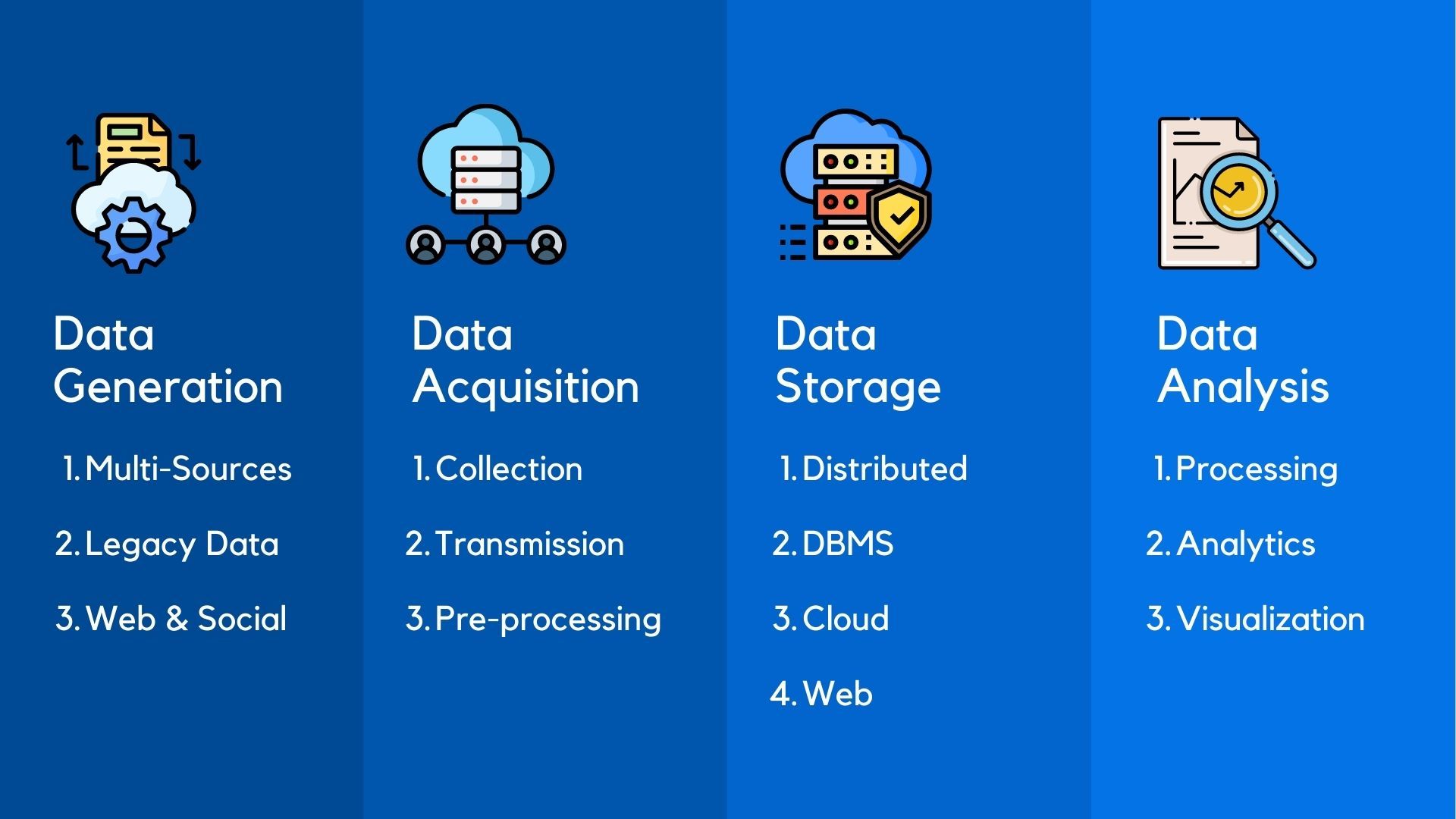The power of data analytics has altered the business landscape. Whether the objective is to increase revenue, boost productivity or create new products for consumers, big data analytics is an indispensable tool that cannot be ignored. However, it is only when companies make resourceful use of this data that they can reap the benefit of their data collection efforts.
Big data and data science
In simple terms, the data that is so big that it cannot fit into the memory of a single machine is called big data. Big data typically need more than one machine to process the data.
Big data is characterized by 3 Vs - variety, volume, and velocity.

Volume: Today, it is not uncommon for organizations to have terabytes or even petabytes of data on their servers.
Variety: A dataset in big data can comprise varied types of data like traditional databases and multimedia data like photos and videos. It also comprises data that comes from a variety of sources like mobile apps, websites, and standalone systems.
Velocity: Big data includes data that is received at different velocities. Batch data is a big chunk of data that may need processing on demand. Batch data can also be periodic, requiring processing at regular intervals. Real-time data on the other hand requires immediate processing.
Types of data
- Structured data: Data that has a layout of predefined columns and rows is structured data. E.g., Excel sheet. This data is easy to search and analyze.
- Unstructured data: This category of data can include things like audio files, images, and text data like open-ended customer comments.
- Semi-structured data: It is a hybrid of structured and unstructured data. E-mails are a good example as they include unstructured data in the body of the message, as well as more organizational properties such as sender, recipient, subject, and date. Social media posts consisting of images, captions, timestamps, and locations are examples of semi-structured data.
Structured Query Language (SQL) is popularly used to manage structured data. Unstructured and semi-structured data require advanced statistical techniques to uncover information from it.

According to IDC’s Data Age 2025 study, there is exponential growth in the data produced. The total volume of data is estimated to reach 163 zettabytes (trillion- gigabytes) by 2025. As most of this data is unstructured or semi-structured, we need advanced statistical techniques to extract value from the data.
What is data science?
Data science entails applying statistical methods to extract valuable information from data. Data is now considered to be a raw material, and by applying data science we can extract different kinds of information. Depending on the data, these insights can enable an organization to increase operational efficiency, identify new business opportunities and improve marketing and sales programs, among other benefits. In this way, an organization can achieve competitive advantages over other organizations in the business.
As our technology and society become more data-driven, big data and data science will become even more intricately related.
Phases in a data science project

- Data generation: Data can be generated from different sources such as sensors, surveillance devices, social media sites, videos, images, transaction records, stock market indices, GPS location, etc.
- Data acquisition: Due to the exponential growth of heterogeneous data production sources, an unprecedented amount of structured, semi-structured, and unstructured data is available. Therefore, Big Data Pre-Processing consists of activities like data integration, cleansing, and transformation.
- Data storage: It consists of the data center infrastructure, where the data is stored and distributed among several clusters and data centers, sometimes spread geographically around the world.
- Data analysis: It involves the application of data mining and machine learning algorithms to process the data and extract useful insights for better decision-making.
Conclusion
Businesses of all sizes are invested in collecting different types of data. To reap the benefits of their data collection efforts, businesses need to work closely with professionals who are well-versed in analytics and big data technology.
If you’re looking for a technology partner to build your data science solutions, reach out to us today. Everestek is a modern technology services company with two decades of unique business know-how and technical expertise to implement digital solutions. From ideation, testing, and deployment, to scaling up the cloud, we can help make sure your data science solutions are built and scaled to drive business.
